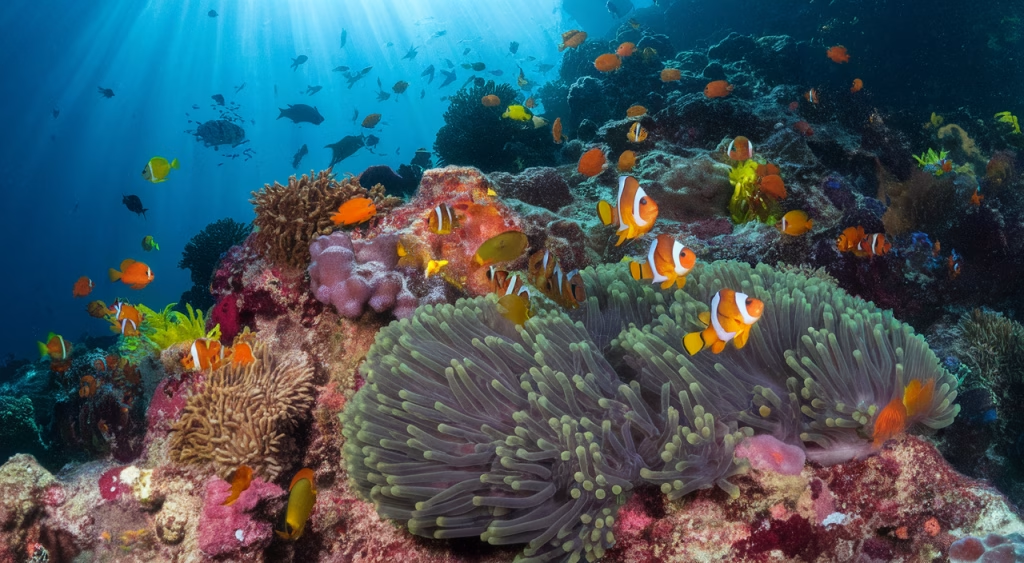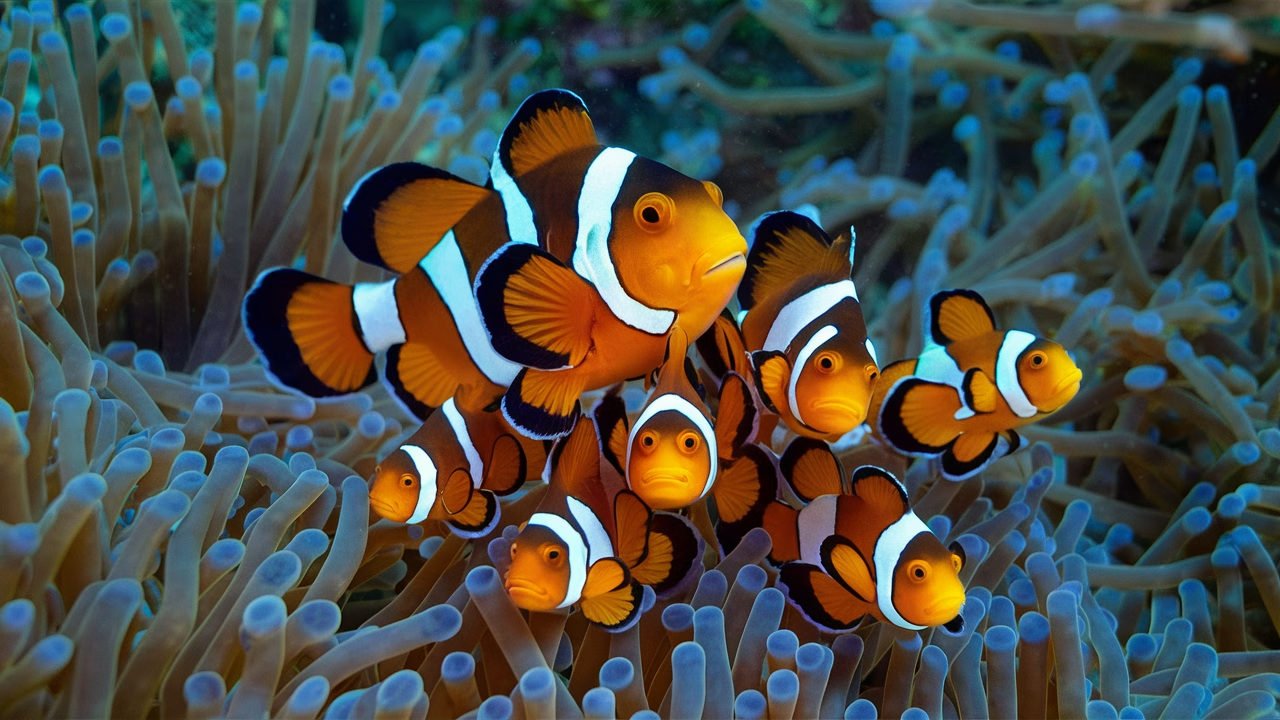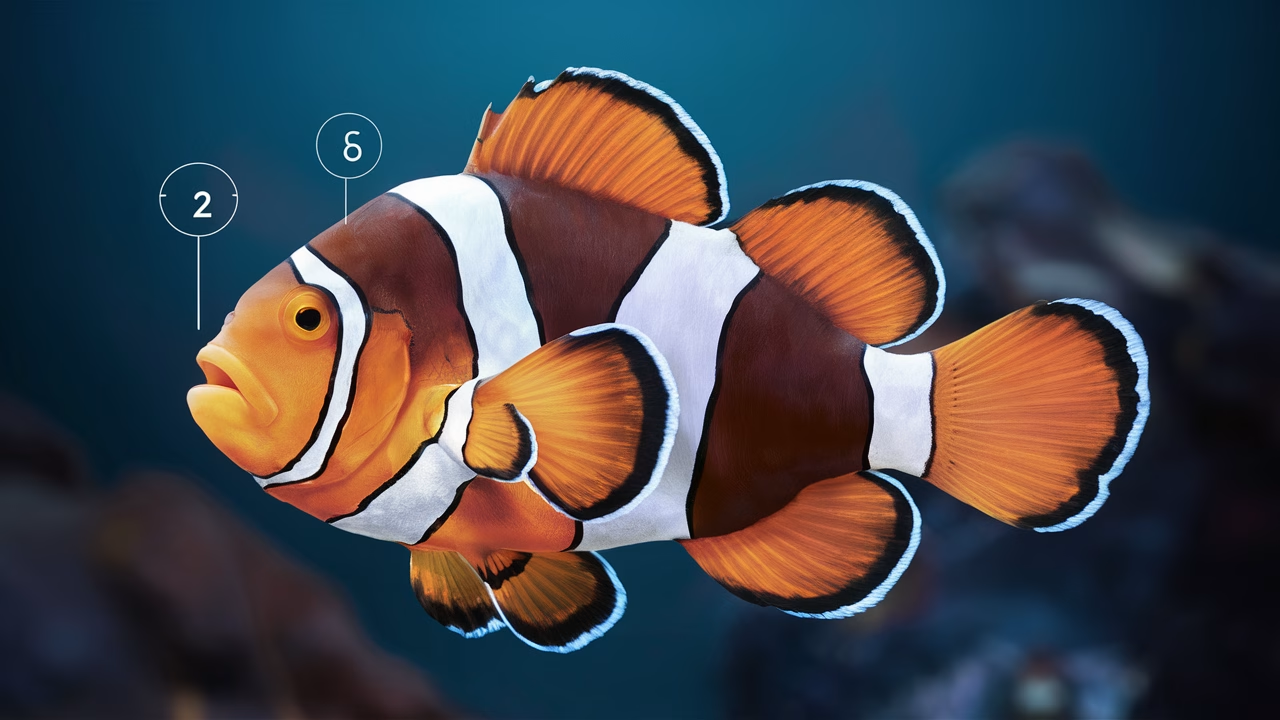Are All Clownfish Born Male?
Yes, all clownfish are born male—a remarkable example of nature’s adaptive strategies. This isn’t a biological accident but an evolutionary masterpiece called protandrous hermaphroditism. In clownfish biology, every individual starts as a male, but the dominant male can transform into a female when needed. This clownfish sex change ensures their survival in the structured social hierarchies of coral reefs, where groups consist of one breeding female, her male partner, and several non-breeding males waiting their turn.
TL;DR: Why All Clownfish Are Born Male
- Evolved Strategy: All clownfish start life as male to adapt to their structured social hierarchies, maximizing their reproductive success within a small group.
- Sequential Hermaphroditism: They are protandrous hermaphrodites, meaning individuals can change from male to female—but never the reverse.
- Triggered by Social Dynamics: Clownfish sex change is typically triggered by the death or removal of the dominant female.
- Hormonal Shifts: Internal steroid hormones and glandular changes drive the transformation over days to weeks.
- Vital for Fish Reproduction: This strategy ensures that no reproductive opportunity is ever missed within a group of anemone fish.
The Social Structure of Clownfish: A Built-in Queue for Reproduction
Understanding clownfish biology means recognizing their rigid social hierarchy. You’ve likely seen clownfish darting in and out of their anemone homes, but beneath their playful exterior lies a structured caste system. In every group, there is:
- 1 Dominant Female – the largest and most aggressive individual controlling fish reproduction.
- 1 Breeding Male – second in size and the mate of the female.
- Several Non-Breeding Males – smaller individuals awaiting their turn for clownfish sex change.
This hierarchy functions like a monarchy with clear succession rules. When the female dies, the dominant male undergoes sex change and becomes the new female, while the next male in line becomes the breeding partner. This orderly system ensures genetic continuity without the risky need to find mates outside their anemone territory.
Clownfish Biology and the Mechanism of Sex Change
The science behind clownfish sex change involves a fascinating biological process called protandry, where organisms start as males and can transition into females. This mechanism is particularly well-studied in species like the three banded anemone fish, revealing how sexual dimorphism works in marine environments.
The sex change process involves complete biological transformation:
- Gonadal restructuring: Male reproductive organs degenerate while ovaries develop, enabling fish reproduction as females.
- Hormonal rebalancing: Shifts in steroid hormones like estrogen and 11-ketotestosterone control the entire clownfish sex change.
- Behavioral transformation: Aggression levels increase as individuals assume the dominant female role in clownfish biology.
Recent studies using genetic sequencing have shown that gene expression involved in cell-cycle regulation and hormonal signaling intensifies during this transformation. It’s not just superficial change—it’s a complete biological overhaul that redefines the individual’s role in fish reproduction.
What Triggers the Sex Change in Clownfish?
The triggers for clownfish sex change are primarily social and environmental cues. When you observe clownfish biology in action, you’ll notice that social ranking determines everything about their reproductive future.
When the dominant female is removed, the senior male undergoes physiological and behavioral changes within 10 to 20 days. This clownfish sex change is irreversible and tightly regulated by social dynamics.
Key Biological Triggers for Sex Change
- Absence of the dominant female in the social hierarchy
- Decline in male-inhibiting pheromones that suppress transformation
- Rise in estrogen synthesis and expression of aromatase genes
Think of it as a biological relay race where chemical signals constantly monitor the social landscape, ensuring seamless transitions in fish reproduction when circumstances change.
The Science Behind Clownfish Sex Change: Current Research
Modern research in clownfish biology has revolutionized our understanding of how these remarkable fish challenge traditional concepts of sex and reproduction. Scientists studying sexual dimorphism in marine species have discovered that:
- Specific genetic markers control the timing and speed of gonadal transformation during clownfish sex change.
- The aromatase gene (cyp19a1) plays a pivotal role—upregulating to convert androgens into estrogens during the transition.
- Brain plasticity enables complete reprogramming of mating and dominance behaviors essential for fish reproduction.
Groundbreaking studies have even used CRISPR-based editing to halt sexual transformation in protandrous fish, demonstrating how crucial this mechanism is for species like the three banded anemone fish and their evolutionary success.
Evolutionary Benefits and Ecological Implications
Why would evolution favor such an extraordinary reproductive system? The answer lies in the unique challenges of reef life and the advantages of flexible fish reproduction strategies.
| Evolutionary Benefit | Impact on Clownfish Biology |
|---|---|
| Maximum reproduction in isolated reef habitats | No need to search for new mates; perfect adaptation to sessile anemone life |
| Streamlined social structure | Only two individuals reproduce while others wait without social conflict |
| Energy conservation | Smaller males use fewer resources; grow only when promoted through sex change |
This clownfish sex change mechanism isn’t unique to clownfish alone. Many wrasses and parrotfish also exhibit sequential hermaphroditism, though often in reverse (female to male). Nature has developed multiple strategies for successful fish reproduction, with sexual dimorphism taking many fascinating forms across marine species.
FAQs
- What causes a clownfish to change sex?
Social hierarchy changes and the absence of a dominant female trigger clownfish sex change through hormonal shifts. - Can clownfish change back to being male?
No. Once clownfish sex change occurs from male to female, the transformation is completely irreversible. - Do all fish change sex like clownfish?
No. Only certain species exhibit sequential hermaphroditism in their fish reproduction, and even fewer show the protandrous pattern of clownfish biology. - How long does the sex change take in clownfish?
Clownfish sex change typically takes between 10-20 days under natural conditions, involving complete hormonal and physical transformation. - Is this behavior unique to clownfish?
While clownfish are most famous for sex change, similar patterns occur in other species showing sexual dimorphism, including wrasses and parrotfish. - What happens to juvenile clownfish in a group?
Juveniles remain non-breeding males in the social hierarchy and will only undergo clownfish sex change if circumstances allow advancement. - Is there any human impact on this process?
Yes, overharvesting and disrupting social groups through aquarium trade can significantly impact natural fish reproduction and clownfish biology.





